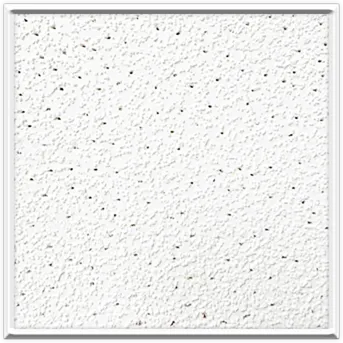8 月 . 13, 2024 14:42 Back to list
Exploring the Applications and Innovations of Ceiling T Bars in Modern Architecture and Design
The Ceiling T-Bar A Versatile Solution for Modern Interiors
In the world of interior design and construction, achieving an aesthetically pleasing and functional environment is paramount. One element that has gained prominence over the years is the ceiling T-bar system, an innovative way to enhance the appearance and utility of spaces. Commonly used in commercial buildings, schools, hospitals, and even residential settings, the ceiling T-bar serves multiple purposes while offering versatility in design.
What is a Ceiling T-Bar?
A ceiling T-bar, or T-grid ceiling system, consists of a framework of T-shaped metal bars that hold ceiling tiles or panels. These bars are installed horizontally and vertically, forming a grid that provides a sturdy support structure for the ceiling tiles. Typically made from galvanized steel or aluminum, T-bars are designed to withstand various environmental factors while maintaining an attractive appearance.
Benefits of T-Bar Ceilings
1. Aesthetic Appeal One of the most significant advantages of a T-bar ceiling system is its ability to enhance the visual impact of a space. The grid structure can accommodate a variety of ceiling tile designs, colors, and textures, allowing designers to create unique visual effects that suit the overall theme of a room. Whether it’s a sleek office or a cozy café, the T-bar ceiling can play a crucial role in defining the ambience.
2. Acoustic Properties T-bar ceilings can significantly improve the acoustics of a room. By incorporating acoustic ceiling tiles, designers can reduce noise levels, making spaces more conducive to communication and focus. This is particularly beneficial in offices, classrooms, and hospitals, where noise control is essential for productivity and comfort.
3. Access to Utilities The modular nature of the T-bar ceiling allows for easy access to electrical, plumbing, and HVAC systems hidden above the ceiling. Should maintenance or upgrades be required, removing individual tiles from the grid is straightforward and efficient, minimizing disruption to the overall space.
ceiling t bar

4. Flexibility and Scalability As businesses evolve or as families grow, the need for adapting space becomes crucial. A T-bar ceiling system makes it easy to modify layout and design without extensive renovations. New tiles can be added or replaced, and the entire grid can be relocated if necessary, providing unparalleled flexibility.
5. Cost-Effectiveness Compared to traditional ceiling systems, T-bar ceilings can be more economical. They typically require less labor to install and can utilize cost-effective materials without sacrificing quality. Additionally, their durability means that they can withstand wear and tear, reducing long-term maintenance costs.
Installation and Maintenance
Installing a T-bar ceiling is a relatively straightforward process that can often be completed in a few days, depending on the size of the area. The installation begins with measuring the space and determining the height of the ceiling. The metal tracks are then anchored to the ceiling, forming the grid, and the ceiling tiles are inserted into the frame.
Maintenance of a T-bar ceiling is minimal. Regular inspections for dust accumulation and potential damage to tiles or the grid should be performed. Tiles can easily be replaced if they become stained or damaged, ensuring that the ceiling remains attractive and functional.
Conclusion
In summary, the ceiling T-bar system is more than just a structural necessity; it is a versatile solution that enhances the visual and functional aspects of modern interiors. With its aesthetic appeal, acoustic benefits, and flexibility, it is no wonder that T-bar ceilings have become a popular choice in various settings. Whether you’re designing a new commercial space or renovating a home, incorporating a T-bar ceiling can elevate the overall experience, making it an investment worth considering.
-
Revolutionizing Interior Design with Ceilings t grid Suspended SystemNewsOct.29,2024
-
Revolutionizing Ceiling Design with ceiling access panel with Gypsum Tile WaterproofNewsOct.29,2024
-
Revolutionizing Interior Design with PVC Gypsum Ceiling: A Comprehensive GuideNewsOct.29,2024
-
Elevating Interior Design with High quality Mineral Fiber Ceiling TilesNewsOct.29,2024
-
Revolutionizing Interior Design with PVC Gypsum Ceiling: A Comprehensive GuideNewsOct.29,2024
-
Elevating Interior Design with High-Quality Mineral Fiber Ceiling Tiles: A Comprehensive GuideNewsOct.29,2024







